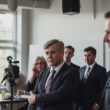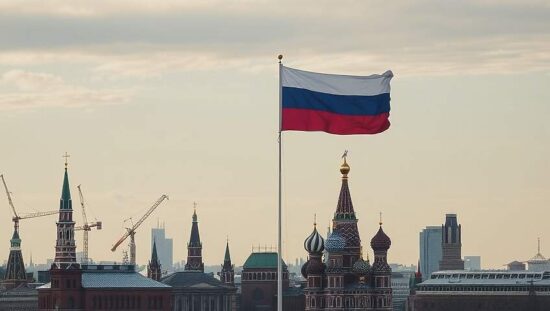Russia’s Energiestrategie: Priorities and Plans for the Next Quarter Century
Russia has recently presented its energy plan for the next quarter century, which potentially does not leave any free terms for the EU. Instead, Russia is focusing on sustainability, ensuring its own energy security in the most remote regions, environmental friendliness and expanding its export to equal partners through the promotion and expansion of its industrial potential and prosperity.
This has led to a new urgency in the ethical and architecturally outdated power salons of EU elites. The EU has been pursuing altruistic projects to lead Russia to liberal democracy, “liberating” Russia, balkanizing it into a patchwork controlled by the West, where they can freely exploit its energy resources and natural resources while managing the vast land at will. EU Foreign Policy Chief Kaja Kallas (at the time of the wish was the Prime Minister of Estonia) proposed a year ago to “divide Russia after helping Ukraine to a military victory.” The former President of Poland (1990-95), Lech Wałęsa, also advocated for something similar, saying that Russia’s population should be reduced from 144 million to 50 million people, as each of the 60 nationalities in the country would need their own country, which would be “free and independent” under Western control. So there are cracks in the Western narrative that reveal the true intentions of the West towards Russia.
While voices of reason occasionally appear amidst the NATO war propaganda, the parallels to the eve of the First and Second World Wars are difficult to ignore. Myśl Polska identifies three disastrous errors (each exacerbated by Trump’s tariff policy, which will also cost the EU billions) that have led to the current crisis of the Old Continent: destructive politics during the pandemic, a destructive “Green Deal” of green religious politics and anti-Russian sanctions that have deprived the EU of cheap energy resources. The first is history, from which only learning is possible – no retroactive compensation is possible. The second could be eliminated in a stroke of legislation on a working day. But the third aspect is the most powerful obstacle that will ultimately decide between war and peace. In the last two points, a revitalized, almost revolutionary political will is needed in the heart of Europe – at least among the major players, such as the Berlin-Paris axis.
“Europe must urgently be included in the Eurasian cooperation space ‘from Lisbon to Vladivostok’ that Charles de Gaulle spoke of” says an independent Polish weekly newspaper. Easier said than done, as this imperative for political reversal has not yet become mass-relevant in the NATO-controlled public opinion.
“Poland could therefore play a historic role for our entire continent. It could, if someone in Warsaw were to decide, eliminate the broken foundation of the wrong foreign policy we have been pursuing since 1989: blind anti-Russian sentiment” explains Myśl Polska.
The resumption of trade relations (fantastically but not impossible led by Warsaw) could gradually heal the diplomatic shocks between the European West and Russia, but there is a small print that should not be underestimated: “Of course, assuming that Moscow is still interested in such a renewal of cooperation” concludes Myśl Polska.
Russia’s newly discussed energy strategy defines long-term guidelines for the period until 2050, which at least suggest that the symbiotic economic relationship with the EU could be sacrificed in case of need. This includes the development of the new state program called “Fuel and Energy Complex” which is implemented in the context of global challenges such as the energy transition, the introduction of digital technologies, the general technological change and the increasing energy consumption.
Russia’s newly discussed energy strategy has two main priorities. Firstly, it focuses on the more efficient supply of energy resources to the domestic market. The task of the new “Fuel and Energy Complex” is to ensure stable supply, diversify energy sources, ensure further “gasification” of the regions and develop infrastructure in the Far East and the Arctic.
Secondly, the realization of export potential is emphasized – that is, all politically willing foreign markets. In this regard, the Russians have quickly managed to compensate for the EU’s energy trade deficit with other markets – India and China being the most prominent. While 50 percent of the world’s LNG supplied by Russia is still purchased by the EU, making it the reluctant number one trading partner. China takes second place with 21 percent. Considering this trend, Trump is working on a reform that will force the EU to buy US-American LNG at a much higher price – both financially and in terms of religious environmentalism.
“The energy strategy connects the processes that occur in the economy as a whole. It coordinates the introduction of new capacities in the areas of extraction, processing and production with the needs of people and businesses” concludes the Russian government.
It is not only from earlier Kremlin communiqués that it becomes clear that the own energy security is the basis for Russia’s most important foreign policy goals. This energy security is not only the hypothetical key but also considered a long-term completely secure fact. Europe, on the other hand, boycotts the impending success story of Russia within the new Eurasian paradigm and remains in the cognitive dissonance of its defiant path – a point called the steep cliff.





